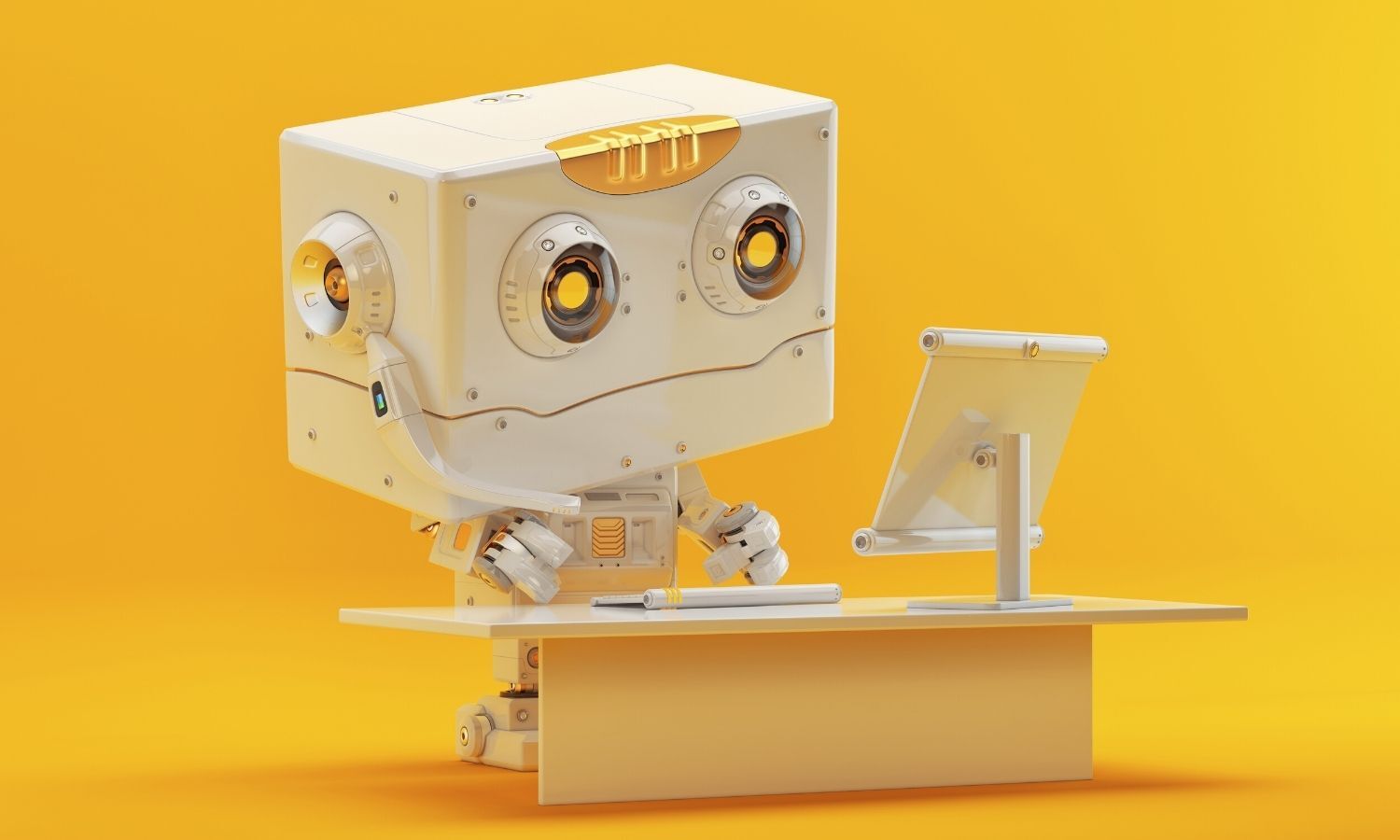
10 Feb Copy with a click – is AI the end of human wordsmiths?
Artificial intelligence (AI) has coded its way into pretty much every job on the market – and every facet of our lives.
But as the tech keeps getting smarter, have we copywriters grown too complacent? Perhaps.
Maybe we ‘real’ writers always deemed ourselves safe from AI’s digital clutches, thanks to our profession’s pair of natural robot repellents: empathy and emotion.
Until now, that is. With Gmail automatically finishing our sentences and massive corporations like Vodafone AI-generating their ads, robots are quickly taking over the writing industry.
So, does this spell the end for us human writers?
The short (unbiased) answer is no. Read on to find out why we’re not handing out our resumes just yet.
Exposing the wires – what is AI copywriting, exactly?
AI copywriting is content composed by a robot application that automatically generates words and sentences.
It uses machine learning techniques to speed up the process – creating almost error-free writing designed to resonate with a specific target audience.
From apps like Grammarly, which checks grammar and plagiarism, to ContentBot and Jasper, which can produce entire articles, AI copywriting software has made incredible strides in recent years.
Marketers from small and large companies alike now rely on AI tools to write everything: from web content and emails to social media copy and paid ads.
(And surprise! This explanation was written by an AI too… with some edits).
Robo writer or not-so-great copywriter? Place your bets now!
In 2019, US bank JP Morgan Chase put Persado, a US-based AI tech company, to the test.
The challenge? Measure click rates and volume to prove that their software’s more valuable than hiring actual copywriters.
The gauntlet was thrown down, and those familiar battle lines were drawn. Who can create better headlines: robots or humans?
Since this blog is written (mostly) by a human copywriter, you might think… surely, the AI lost.
Well, dear reader, it’s much too early in this article for a happy ending.
Yes – in a scary turn, AI beat out the human. And sadly, the results weren’t even close – the AI-generated headlines received double the click rates.
At a glance, this study all but packed our bags. But look closer, and a simpler truth reveals itself – the human copywriter just sucked!
Let’s look at the headlines:
- Human: Access cash from the equity in your home
- AI: It’s true—You can unlock cash from the equity in your home
The AI headline certainly isn’t ground-breaking, but it’s easy to see why it won. It’s clickbaity and conversational, while the human copy is merely bland and uninspiring.
And this study was just the start of Persado’s feud against us. Since then, they’ve released one case study after another, with flashy headlines such as Fortune 50 bank drove $100 Million in annual incremental revenue.
The common denominator? Weak, human-written copy.
One thing’s for sure, though – if Persado or any AI copywriting tool wants to lay such a bold claim, they must first level the playing field.
How? By challenging a more competent human copywriter.
Enter stage left: Human copywriters
Copywriting is about more than just slapping words together, and hoping they stick. After all, there are certain – quintessentially human – nuances that random ones and zeroes simply can’t grasp.
Here are a few of them:
- More than just headlines: The purpose of a headline is to grab attention. But keeping readers engaged after being hooked with the headline (on a landing page for example) is another matter entirely. Currently, AI copywriting tools can’t fact-check, adapt to a specific tone of voice or create flow in writing – just a few hallmarks of quality copy.
- AI lacks originality: AI generates copy by analysing and stringing together pre-written human content. Without new human creativity and thought, artificial intelligence’s well of inspiration will eventually run dry.
- AI is incapable of emotion: Sure, AI can replicate emotion, but it has a long way to go before it can understand – and empathise with – real people. Take Nike’s tagline, Just Do It, as an example. It’s clever, catchy and concise. But above all, it’s human; evoking people’s exercise struggles with poignancy and relevance. AI can’t target those pain points that make copy memorable.
The answer? AI is a tool – not a threat.
AI can be an incredible resource for copywriters. And given how fast AI is advancing, the copywriter of tomorrow needs to know how to use it strategically.
AI copywriting tools can help with:
- Research: With just a click, AI can compile around 10-20 resources. Are they all credible? No – but automating your research certainly represents an improvement over doing it yourself!
- Eliminating writer’s block: Tools like CopyAI and Anyword can brainstorm hundreds of ideas, headlines and articles within minutes.
- Proofreading and analysing tone: Copywriters occasionally break grammar rules. But for the most part, tools like Grammarly and Hemmingway spot our mistakes and typos, and help us tighten up our copy.
- Lightening workloads: For larger brands, the sheer amount of content to be written can be overwhelming. AI can relieve copywriters from more menial writing jobs, like putting together sales eDMs and product descriptions.
Postponing the apocalypse
Despite not heralding our apocalypse, AI copywriting tools have come a long way – and an average writer might easily be swept away by them.
But remember, even the smartest computer can’t beat well-crafted copy.
That’s why skilled copywriters – particularly ones that continue to hone their craft, like us – will remain irreplaceable…
…for now!
Eager for copywriters that’ll stick around? Learn more about Refresh Marketing – we’re eager to meet you too!

